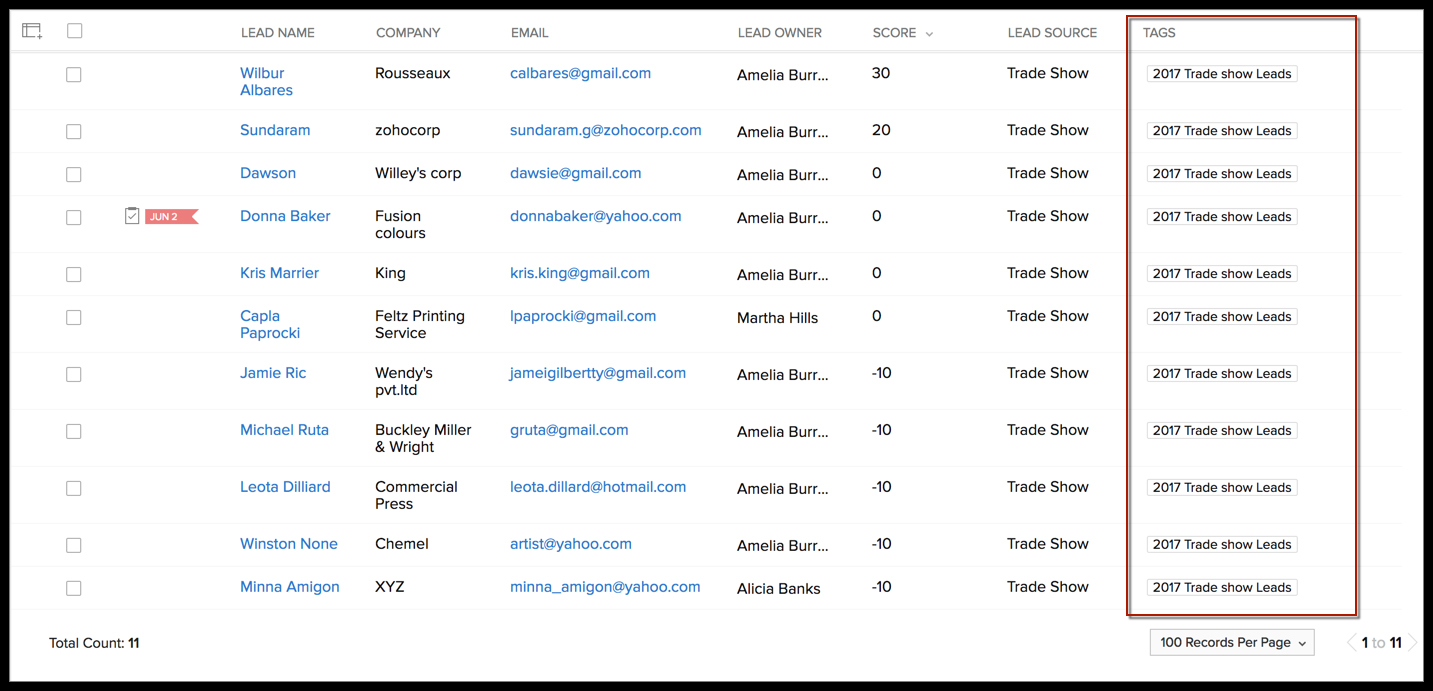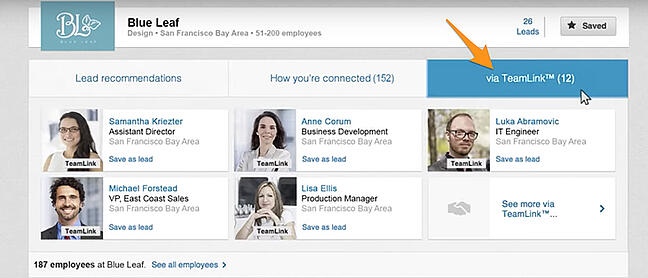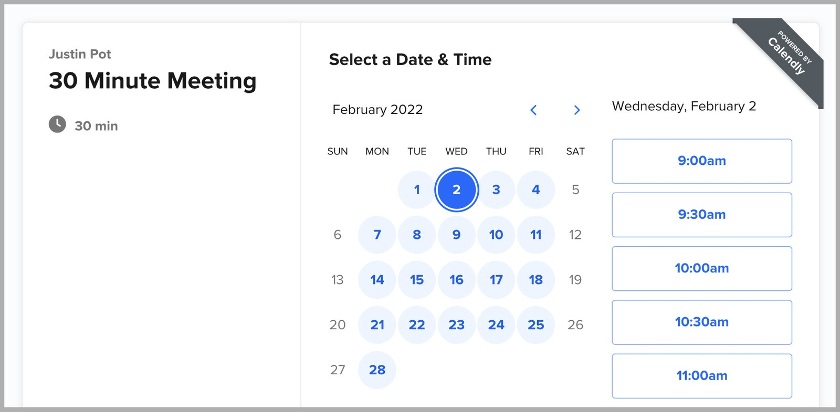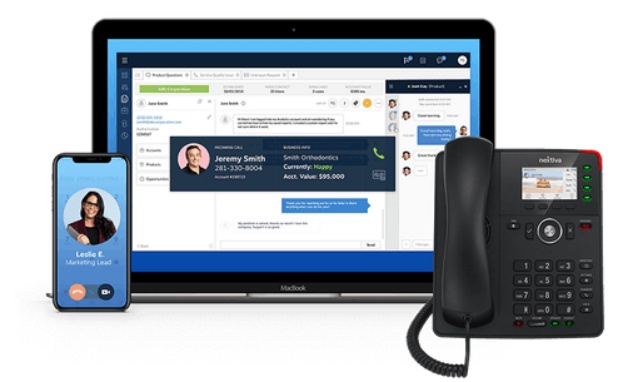Using cold calling scripts during direct outreach campaigns allows you to introduce offerings and address objections with more confidence. An effective cold calling script fosters personal connections with the call recipient, grasps their attention through an intriguing sales pitch, and provides a clear call to action after the conversation. In this article, we explore how to make a cold call script and provide templates that help generate robust sales opportunities.
Free Cold Calling Scripts Templates
A cold calling script can act as a sharable resource for your entire team to use during their calling campaigns. The issue, however, is taking the time to write a script for unique circumstances and objectives. We’ve crafted free cold calling script templates to use throughout the step-by-step process. Download them below in PDF, Word, or Google Docs formats.
Thank you for downloading!
💡 Quick Tip:
After a successful cold call, schedule product demos with clients easily with an appointment scheduling tool.
Consider software like Calendly that connects with your calendar and gives you a personal link to share with clients so they can quickly schedule sales conversations.
If you’d prefer to create your own cold calling scripts from scratch, follow these steps that will take you from campaign planning all the way to initiating a call to action (CTA):
1. Determine Your Cold Calling Objective
Cold calling can come in different forms of dialogue as long as it meets the criteria of contacting someone for the first time over the phone. The specific objective as to why you’re calling will dictate how your script is written, and should be established before diving into how to open a cold call. At a minimum, here are some common objectives or reasons why you may be conducting cold calls:
- To schedule an appointment: Generating leads by setting up sales calls, presentations, or product demonstrations with the call recipient and other decision-makers.
- To qualify a lead: Determining fit for your products or services based on the call recipient’s budget, authority to make a decision, need, and timeline in terms of urgency.
- To make an introduction: Contacting someone who might be a solid fit to make them familiar with your brand and offerings. This is often supplemented with advertising a special promotion to get them interested.
Pro tip: Your sales and marketing campaigns—including cold calling outreach—will be used to fulfill revenue and growth goals. A detailed sales plan is an excellent source for laying out your strategies, processes, and desired key performance indicator (KPI) metrics to meet those goals. Learn how to write one in our guide on how to create a sales plan, which includes a step-by-step process and free plan templates.
2. Gather Resources
A script and telephone aren’t the only tools you’ll need for your prospect call campaigns. Sales technology, cloud phone systems, and lead databases will help you stay efficient and informed while placing calls. Software such as customer relationship management (CRM) systems help you track information such as lead sources, connections with mutual contacts, and potential pain points you’ll use to write certain sections of your cold calling script.
Popular products like Zoho CRM, for instance, allow cold callers to take notes, place tags, and monitor the activity of leads and contacts. From there, you can use the data to create your scripts. For example, placing a tag such as “trade show lead” indicates the contact is a member of a trade association or attended one of their events. That information is useful when citing relevant connections in your script.

Zoho CRM contact list tags (Source: Zoho)
Voice-over-internet-protocol (VoIP) solutions are another valuable resource for sales reps to place, receive, and manage phone calls through the internet. Nextiva, for example, is a VoIP and contact center product that syncs contact data with CRMs such as Salesforce and HubSpot, and can store files for users to access, like cold calling scripts.
Lastly, if you’re looking for a particular set of leads to call based on your cold calling objectives or connections you plan to reference during the call, you can purchase a list from a lead provider. UpLead is a business-to-business (B2B) database full of valuable information filtered by criteria such as job title, business location, industry, and current technology the lead uses. The system lets you search, filter, and then download lists that meet your needs.

UpLead contact list (Source: UpLead)
3. Create an Introduction
Your introduction is a simple greeting, just as you would use when meeting anyone for the first time. For instance, starting with a “Good morning” or “Hello, my name is John from ABC Corp” will suffice for this step. You can include your job title if you think it would be relevant to the recipient.
While no one is ever expecting a cold call, never apologize with statements like “sorry to bother you,” as it indicates your call may not be of value to the prospect. Also, avoid asking a lead, “Did I catch you at a bad time?” It provides them with a quick and easy exit from the conversation and is proven to decrease your likelihood of booking a meeting by 40%.
4. Cite Relevant Connections
The purpose of citing a relevant connection during cold calling is to keep the prospect interested by referring to something they are familiar with or interested in. You may need to do some in-depth research prior to this step and tailor it for each contact. Below are some types of citable connections you can use with examples:
- Mentioning a mutual friend or professional colleague: “I saw on LinkedIn that you’re connected with Cameron Eck; he’s a good friend of mine.”
- Citing a referral by a mutual connection or gatekeeper: “Madison mentioned that you were having trouble with your IT support provider and were potentially looking for other options.”
- Referencing a recent news story relevant to the prospect: “I’m sure you saw the recent news about the data breach at the local CPA firm, so I am reaching out personally to other CPA firms in the area.”
- Acknowledging an event the prospect was involved in or an award they received: “I saw your firm won an award for its positive and enjoyable workplace; that’s awesome to hear!”
- Bringing up a similar interest or prior membership/employment: “I saw from your bio that you are a fellow James Madison University graduate.”
Pro tip: Using advanced social media tools like LinkedIn Sales Navigator is an excellent way to research and cite relevant connections. This tool not only lets you find leads through an advanced search and filter system, but also recommends leads based on your industry and job title criteria. There’s also TeamLink, which allows you to view leads directly connected with other company members, giving a citable mutual colleague during cold calling.

LinkedIn Sales Navigator TeamLink (Source: HubSpot)
5. State the Purpose of Your Call
Stating the reason for your call can boost calling success rates by 2.1 times. This should be relatively short based on your cold calling objectives and the context around each particular call.
For instance, if you’re merely making an introduction for your brand to someone entirely new, the purpose statement would be something like “I wanted to make a quick introduction on what we have to offer.” Alternatively, for cold calling to qualify a lead, you might say, “I want to learn a little about you and your business to see if you could get value out of what we have to offer.”
6. Utilize Qualifying Questions
Asking questions serves as a way to prove to the recipient that you care about their needs and to identify prospects as “well-suited” for your products or services. Questions typically are used to qualify a lead using a framework such as budget-authority-need-timeline (BANT).
This helps you decide whether or not it’s a solid opportunity by evaluating their budget for a purchase, authority to make a decision, need for your solution, and timeline of urgency. Some questions you can use to fulfill BANT to identify good leads include:
- Do you have any budget restrictions for [product/service]?
- Are you the person who would make the decision for this type of solution, or are there other decision-makers?
- Are you encountering day-to-day challenges such as [challenges your solution solves]?
- Is there anything about your current [solution] provider you’d like to see improved?
- Is there a certain timeline in which you plan to make a purchasing decision?
Questions may also be employed for insights on the prospect to understand them better. Usually, it’s best to use intelligence-based questions if you’re cold calling to introduce your brand and want simple information early on. Some questions you could ask for insights include:
- Who is your current provider for [solution]?
- Are you the correct person to be contacting for [solution]?
- What are some things you like and dislike about your provider?
- How many employees are in your organization?
- Is there a particular target market our audience your business focuses on?
Pro tip: Log the information you gather from your qualifying questions in your CRM system for your team to access and reference later. Citing the information in demos, presentations, or sales calls later on shows you were actively listening to prospect pain points and product or service preferences. In fact, 69% of buyers say that a rep listening to their needs was the top way to create a positive sales experience.
7. Insert Your Sales Pitch
Arguably, the most essential component of your cold calling script is your sales pitch, which will be used regardless of your primary objective. In 30 seconds or less, you will explain your unique selling proposition and target market based on your product or service attributes.
Example: “We are a boutique cybersecurity consulting firm that works exclusively with small and mid-sized manufacturers. Our teams of engineers and analysts are experienced in managing supply-chain risks and protecting processing technology from shutdowns through backgrounds in IT support for manufacturing firms. This allows us to fully understand your unique circumstances and the security requirements of your industry.”
8. Prepare for Objections
Preparing for objections is less of a cold calling script and more of having a list of responses ready for specific concerns. The concerns could be statements made by the prospect such as “That price range seems a bit expensive” or questions like “Does your team have the experience needed for this type of work?” At a minimum, four common reasons for lead hesitancy you should prepare for include:
- Budget or price: Decision-maker feels the solution is not worth the price or has budget restrictions for that specific purchase.
- Fear of change or operational disruption: Company or lead is comfortable with the way they are doing things or does not wish to cause changes to the operation of their product or service implementation.
- Prefers more experience or recognizable brand: Prospect is interested in the product or service but is not familiar with your firm or not comfortable with your firm’s experience.
- Satisfied with current provider or solution: Prospect would benefit from your solution but is happy with their current provider or solution, such as utilizing in-house personnel.
Pro tip: Worried about how to address common concerns during your cold calls? Check out our guide on overcoming objections so you are prepared to revive sales opportunities for all types of buyer concerns.
9. Initiate a Call to Action
The call to action (CTA) is your attempt to move the lead to the next step in the sales process and fulfill the cold calling objective. The two most common calls to action with example statements for this step include:
- Set up an appointment/product demo: “I’d love to show you what we can offer with a quick 15-minute demonstration. Are you free next week to go over some of the features that could help you reach your goals?”
- Obtain contact information for follow-up or to send information: “If I can get your email address, I can follow up with additional information about what we do and how we can help.”
The call to action can be altered based on the prospect’s interest. At a minimum, you should always try to at least get their additional contact information and consent to send marketing materials or other pertinent information. For example, if you’re trying to schedule an appointment, but they reject you, respond with “No worries, I can email some information for reference in case the need arises. What’s the best email address for you?”
Cold Calling Script Examples
Now that we’ve run through the step-by-step instructions for how to make a cold call script, you can use these examples to customize your own. Below are six template-style examples you can use for various circumstances.
1. Appointment Setting Script
Tailor this sales script for when you’re cold calling to set up a product demo or sales presentation for a future date. In the following example, citing the lead’s position in the industry reeled them into the conversation. You can take a similar approach by conducting in-depth research on the contact before placing the call.
Hi [prospect name], this is [your name], from [your organization name]. We haven’t gotten a chance to talk directly yet, but I saw that your company is one of the top providers of [specific product/service your prospect offers], and I wanted to quickly share ways we’ve helped other businesses similar to yours.
Is this an OK time to chat for a few minutes?
[Client agrees to chat]
Excellent. So we are a [product/service] business that specializes in [market niche or specific solutions], which is why I wanted to reach out to you directly. Our [product/service attribute] solution allows you to [benefit of using product/service].
I’d love to show you more with a 15-minute [demo or presentation]. Are you free early next week so I can show you the [features or services] that may help you reach your goals?
- Scenario 1: [Prospect agrees]
Great. If I can get your email address, I will send you an invite to my calendar portal so you can pick a time that works for you.
- Scenario 2: [Prospect rejects]
OK, no worries. I can email you some additional information for reference, so if you find you need our services later, you’ll have my contact information. What’s a good email address for you?
Pro tip: Did you know 80% of sales calls go to voicemail, yet there’s only a 5% voicemail response rate? Rather than leaving a message to unanswered calls, save time and effort by finding another time to call to reconnect with a prospect. Reps can increase their conversion rates by as much as 70% by simply following up on their sales calls.
2. Addressing a Gatekeeper Script
There are plenty of situations where you do not have the exact contact information of the person you’re trying to reach or don’t know the best person to speak with. In these circumstances, you likely must go past a gatekeeper before contacting the decision-maker.
Hi, this is [your name] from [your organization name]. I was hoping you could help me find the right person to speak with.
I’m trying to connect with someone who manages your [department/job function who would likely be a purchaser of your product/service]. Do you know who that might be?
[Gatekeeper names person]
Excellent. I’d love to try and reach out to them directly if possible. Do you have their contact information on hand?
- Scenario 1: [Gatekeeper gives contact information]
Awesome, this is great. Thank you for your help. I’ll leave my information with you and reach out to [contact name].
- Scenario 2: [Gatekeeper does not have information or cannot disclose it]
No worries. How about I leave my information with you to pass along to [contact name], and I will follow up again next week. Can you tell me the best time to reach [decision-maker’s name]?
- Scenario 3: [Gatekeeper decides to forward you directly to the decision-maker’s phone]
Great, thank you so much.
3. Referencing Event, News, or Award Script
This script is used to reference an event or project your prospect was involved in, a news story that might affect them, or an award they recently won. Each option is designed to get them engaged and leads nicely into your sales pitch.
Hi [prospect name], this is [your name] from [your organization name].
- Option 1: I was impressed with some of the recent [community service or client project] your organization was involved in, which made me want to reach out directly.
- Option 2: As you’re probably aware, [mention the recent news story of interest to the prospect], and because of this, I wanted to reach out directly.
- Option 3: I was impressed with the recent [award name] award your organization received, which made me want to contact you directly.
We are a [product/service] business that focuses on [market niche or specific solutions], something your business may find value in.
I’d love to go into more detail with a 15-minute [demo or presentation] so you can learn more about the [features or services] we offer. Is this something you are interested in learning more about?
- Scenario 1: [Prospect is interested]
Excellent. Can I send you an invite to my calendar portal so you can find a time that works for you?
- Scenario 2: [Prospect is not interested]
OK, no worries. I can email you some additional information for reference so if you find you need our services later, you’ll have it and my contact information. What’s a good email address for you?
4. Connecting Through a Referral
Citing a referral or mutual connection after introducing yourself adds a degree of association with the prospect you’re contacting. While the best option is to acknowledge a referrer who told you to contact the lead, that is not always the case, and you may have to resort to citing someone in both of your networks or the gatekeeper.
Hi [prospect name], this is [your name] from [your organization name].
- Option 1: [Referrer] told me to reach out as they mentioned you were having trouble with [problem they are having].
- Option 2: I saw that we’re both friends with [mutual connection], so I wanted to make a direct introduction.
- Option 3: [Gatekeeper] told me you are the best person to speak to about [product/service you are offering].
Do you have a minute to chat?
- Scenario 1: [Prospect agrees]
Great. So, we are a [product/service] business that focuses on [market niche or specific solutions], something your business could find value in.
Our [product/service attribute] solution allows you to [benefit of using product/service]. I’d love to show you more with a 15-minute [demo or presentation]. Are you free early next week to learn more about what we offer?
- Scenario 2: [Prospect states it is not a good time]
No worries. Can we arrange 10 minutes to talk next week when it’s a better time for us to chat?
If the prospect says it’s a good time to talk but rejects the product demo/presentation, alter your call to action to:
5. Promoting Special Offer Script
Rather than trying to qualify a lead or schedule an appointment, you can use cold calling to execute one of your sales promotion ideas. In these cases, you’re using the promotion to introduce your brand, products, or services. Through limited-time perimeters, you create a sense of urgency to quickly entice leads into the sales pipeline. You can also narrow your market by only offering it for certain leads based on company size, industry, or location.
Hi [prospect name], this is [your name] from [your organization name]. We haven’t had a chance to meet, but I wanted to reach out and let you know about a special offer we are currently promoting for [time range or specific company attribute].
We are providing (or offering) [special offer: free consultation, free trial, discount, bulk deal, and so on] to help businesses like your own [the benefit of taking advantage of special offer].
Is this something you are interested in learning more about?
- Scenario 1: [Prospect expresses interest]
Excellent. If I can get the best email address for you, I will send all of the details of the special offer as well as the link to [sign up, redeem, or schedule special offer] to get the ball rolling.
- Scenario 2: [Prospect rejects]
OK, no worries. If I can get the best email address for you, I will send some info on the special offer as well as other marketing materials in case you change your mind.
6. Lead Qualification Script
This script is used as part of the lead qualification process to determine if the prospect is a solid fit for your offerings. Much of the script is a discovery call that involves asking relevant, open-ended questions to learn more about the business, their needs, preferences, and potential interest in learning more.
Hi [prospect name], this is [your name] from [your organization name].
I was hoping to make a brief introduction and learn a little more about your business. Do you have a minute to chat?
[Client agrees to chat]
Excellent. I know you are busy, so I will keep this brief. We are a [product/service] business that focuses on [market niche or specific solutions], which allows our clients to [benefit from using product/service].
Do you mind sharing which [product/service] provider you are currently using?
[Prospect answers]
Great. And is there anything in particular you dislike or would like to improve about using [prospect’s current provider]?
[Prospect answers]
Terrific. And how about some aspects you like most about using [prospect’s current provider]?
[Prospect answers]
Excellent. So I think we could be a good fit based on some of the [product/service] attributes you want to prioritize. I’d love to continue this conversation with a 15-minute [demo or presentation] so I can show you how the [product/service attributes] can [how attributes can help with what they like about their current provider], as well as how the [product/service attributes] can help you [how attributes can help with what they dislike about current provider].
Can we get a meeting scheduled for next week?
- Scenario 1: [Prospect agrees]
Sounds great. I’ll send you an invite to my calendar portal so you can find a time that works for you.
- Scenario 2: [Prospect is not interested]
OK, no worries. I can email you some additional information for reference so if you find you need our services later, you’ll have my contact information. What’s a good email address for you?
When cold calling to qualify leads, you can also insert questions related to the BANT framework, as we mentioned earlier, in addition to your intelligence-based questions. This helps you both learn more about the lead and ensure it’s a solid opportunity to pursue further.
Pro tip: Utilize scheduling automation software such as Calendly to streamline your appointment scheduling and make it easier for leads to connect with you. Calendly uses a portal synced to your calendar to find and schedule open time slots for demos or presentations. The portal link can be sent through email or embedded into a button on an email signature.

Calendly scheduling portal (Source: Wired)
Bottom Line
Cold calling scripts are essential to standardizing cold calling campaigns with guided dialogue that has proven to work for your business. Business owners and sales managers should ensure their reps have access to customizable scripts for various circumstances and objectives. Additionally, sales team members should be trained to handle objections along the way and re-route conversations as necessary.

